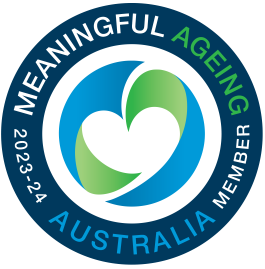
Arthritis is a disease that causes inflammation of joints in our bodies, which can cause swelling, stiffness and pain. Arthritis in old age, if not managed well, can worsen as we grow older. There are many different types of arthritis, with the most common arthritis in older adults being Osteoarthritis and Rheumatoid Arthritis.
But how can we help seniors and the elderly with arthritis?
Arthritis Australia have released a “10 Steps for Living Well with Arthritis” information sheet. Not only does it address the impact of arthritis in older adults but it has some great advice for those living with the condition at home, which we want to share – with additional advice for carers and family members of those living with arthritis!
Table of Contents:
- Educate Yourself on the Disease
- See a Doctor Regularly
- Make the Most Out of Your Healthcare Team
- Discover your Treatment Options
- Keep Yourself Active When Possible
- Utilise Pain Management Tricks
- Don’t Overlook Your Feelings – Seek Support
- Eat Healthy Food
- Find a Healthy Balance in Life
- Seek information from local arthritis offices
1. Educate Yourself on the Disease
It is worth taking time to research and educate yourself on the disease if you haven’t yet. Arthritis in older adults can feel overwhelming, but with education comes a better level of understanding the condition, making those living with arthritis feel more “in control” of it.
Having more knowledge of the type of arthritis being dealt with allows those with it to better treat or relieve pain, know their limits of activity and when to best rest. Carers can also get involved, doing research together with a client to better understand what they are going through and how they can help and work together to create solutions for pain management.
2. See a Doctor Regularly
Following from this, ensuring those living with arthritis see a doctor regularly or as soon as there’s a change in the condition is of the highest importance. Early diagnosis and treatment plans can help limit the effects of arthritis on your daily life, so it’s worth getting a doctor to perform necessary tests if you feel you may be living with arthritis. Carers can help clients schedule appointments and organise transport.
3. Make the Most Out of Your Healthcare Team
Whether a client sees a doctor, rheumatologist (arthritis specialist) or even their carer, they should feel comfortable asking as many questions as possible to get the most up to date information and best treatment to their symptoms possible. Arthritis in elderly treatment options should not be overwhelming and should be relatively easy to identify for each client.
4. Discover your Treatment Options
There are a range of treatments or lifestyle changes a doctor may suggest. This could be something like physiotherapy or podiatry. Additionally, medicine will be recommended, such as pain relievers and anti-inflammatory drugs. Being overweight is a risk factor of osteoarthritis, so it’s often suggested that a healthy diet is introduced to a client’s lifestyle, as well as exercises.
5. Keep Yourself Active When Possible
Get moving – regular exercise is an effective way of treating arthritis! Exercise for older adults with arthritis can actually help decrease pain, increase flexibility, and strengthen muscles – taking the load off their joints. Not only this, but exercising is an essential part of a healthy lifestyle can help most clients with its overall health benefits.
6. Utilise Pain Management Tricks
Sometimes we can’t just get rid of pain quickly, which requires some education on pain management. Whilst a healthcare team can provide medicine, pain relievers or alternative medicinal remedies to alleviate pain, those living with arthritis as well as the elderly with arthritis can learn to utilise some pain management tricks in addition to or substitution of medicine.
Heat or ice packs may provide pain relief to targeted areas of the body. Distraction techniques may take a clients’ mind off the pain (like reading or listening to music), or simply relaxing may be enough to get through the pain. Clients should discuss their pain with physiotherapists to get good feedback on ways they can manage the pain.
7. Don’t Overlook Your Feelings – Seek Support
When dealing with arthritis, it’s important for a client’s feelings to be validated and understood. A person living with arthritis can feel frustrated, angry, anxious, stressed, embarrassed, and even depressed, so it’s important that if a client needs mental health support, in addition to the support and treatment of their arthritis, that such mental health support is organised for them.
8. Eat Healthy Food
Those living with arthritis can prepare plenty of food rich in omega 3 oils which have been proven to reduce inflammation. You can find omega 3 in foods like salmon and other oily fish, linseeds and its oil, walnuts, canola oil and fish oil supplements. When helping a client with shopping, consider getting these omega 3 rich foods into their diet to help get that omega 3 goodness into their system.
9. Find a Healthy Balance in Life
Our days can easily become overloaded, however a person with arthritis should have a balance of activity work and rest to ensure they aren’t in pain from moving too much. Planning their day is a recommendation from Arthritis Australia, allocating time for activity and then plenty of rest following. If a client is having a ‘bad day’ – feeling the effects of arthritis more than usual, it’s worth cancelling plans and resting.
Additionally, it’s worth looking into ways you can help a client’s home become more arthritis friendly. Look at items they struggle to use and see if alternate options exist. For example, you can get adapted cutlery and cooking utensils, which allow a client to hold more comfortably or finding essential tools to assist in tasks we may overlook.
Check out stores like MobilityHQ, who have a range of arthritis-friendly items available.
10. Seek information from local arthritis offices
The final piece of advice that Arthritis Australia recommends is to get in touch with the local state/territory Arthritis Office, as they can inform carers and clients of the most up-to-date information and provide support, services and information. You can contact an Arthritis Office on 1800 011 041.
Conclusion
It’s important to note that whilst arthritis can at times be painful and affect daily activities, it’s possible for clients to still get the most out of life with the assistance of carers and health professionals and utilising the right tips to assist in daily life. View the full information sheet from Arthritis Australia here.
References:
1. Arthritis Australia, 2019, 10 Steps For Living Well With Arthritis, Arthritis Australia Information Sheet, Pages 1-10.
2. Combe B, Landewe R, et al., 2016, Update of the EULAR recommendations for the management of early arthritis, Annals of the Rheumatic Diseases (ARD), 2017 Jun Pages 948-959.








